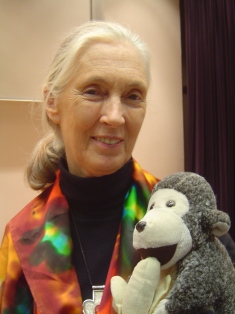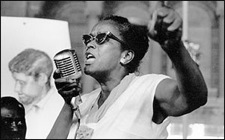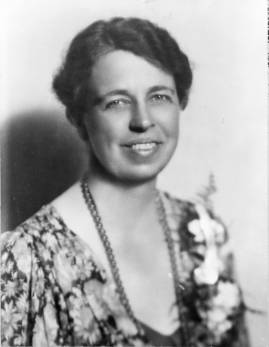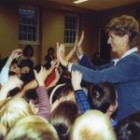The following blog post was written by Danielle Blackmore.
Jane Goodall is someone many of us recognize for her work with chimpanzees, but the significance of her work in the scientific community and for women is something people are less familiar with. However, after learning more about her and her work, I think that her accomplishments warrant a closer look not only for the gains she made for science, but also for the path she helped pave for other women scientists to come after her. So, in the following post I share the importance of Jane Goodall’s accomplishments in the hope that her work for science and for women can be better appreciated.
Jane grew up in England in the 1930’s, and at the age of 26 began observing chimpanzees in Tanzania. During this time, she took unconventional routes to conducting research that challenged previous scientific findings. Instead of numbering chimps for example, she gave them names and observed them to have unique and individual personalities. At the time it was believed that naming chimps would take away from the observer’s ability to be objective, but in Goodall’s case it added to her findings. Jane for instance, found there are more similarities that exist between chimps and humans than just in our genetic makeup- we have emotions, intelligence, and family and social relationships in common. She also made other findings that challenged longstanding beliefs at the time, such as the belief that only humans could construct tools and that chimps were vegetarians.
Before she initially took the trip to Tanzania to conduct this work, a lot of people doubted Goodall’s abilities because she didn’t complete her degree and lacked a formal science education. Furthermore, Jane Goodall conducted this work at a time when women were fighting for rights in the third wave of feminism, and encountered challenges deeper than scientific credibility.
In her current life, Jane Goodall travels around the world giving talks at college campuses and advocates for animal and human rights issues. She mentioned that since her time in science, the field has definitely changed, but that there are still a lot of misconceptions about women and science. For example, Goodall explained that in a trip to China, she met a young woman who was studying pandas but didn’t believe she could become a scientist due to her gender.
However, the girl told Goodall that after she read a book Jane wrote about her experiences in the field of primotology, it gave her the confidence she needed to pursue her dream of studying pandas.
Fun Facts about Jane:
☆ Her favorite books growing up were Tarzan and Dr. Dolittle (she said herself she knew she’d be a much better jungle companion for Tarzan than that other Jane).
☆ She is still alive and active today, speaking to groups of students, meeting with government officials to discuss conservation issues, sitting before television cameras for interviews, and meeting with donors to raise money for the Jane Goodall Institute- which is a global nonprofit that empowers people to make a difference for all living things.
Did you Know…
Jane Goodall is a vegetarian and advocates for others to take up a vegetarian diet for ethical, environmental, and health reasons.
She has an affinity for working with young people and is determined to use just about every minute she has working to save chimps and to empower people- young and old- to do what they can for a better world.







